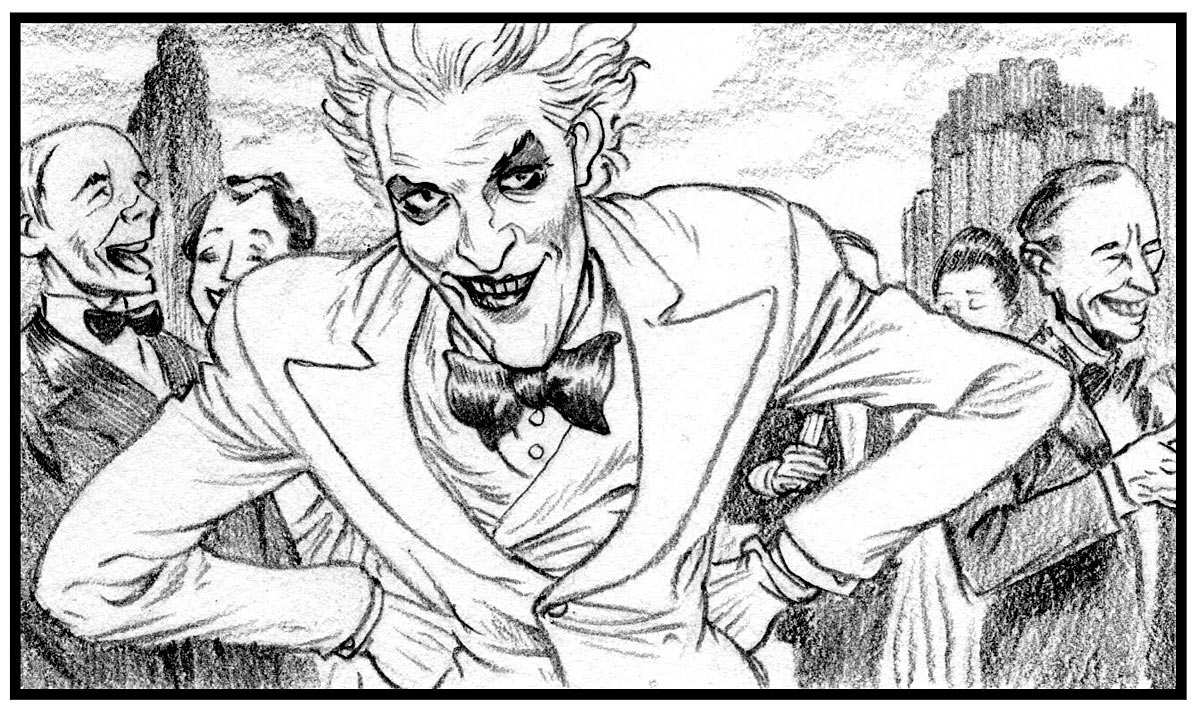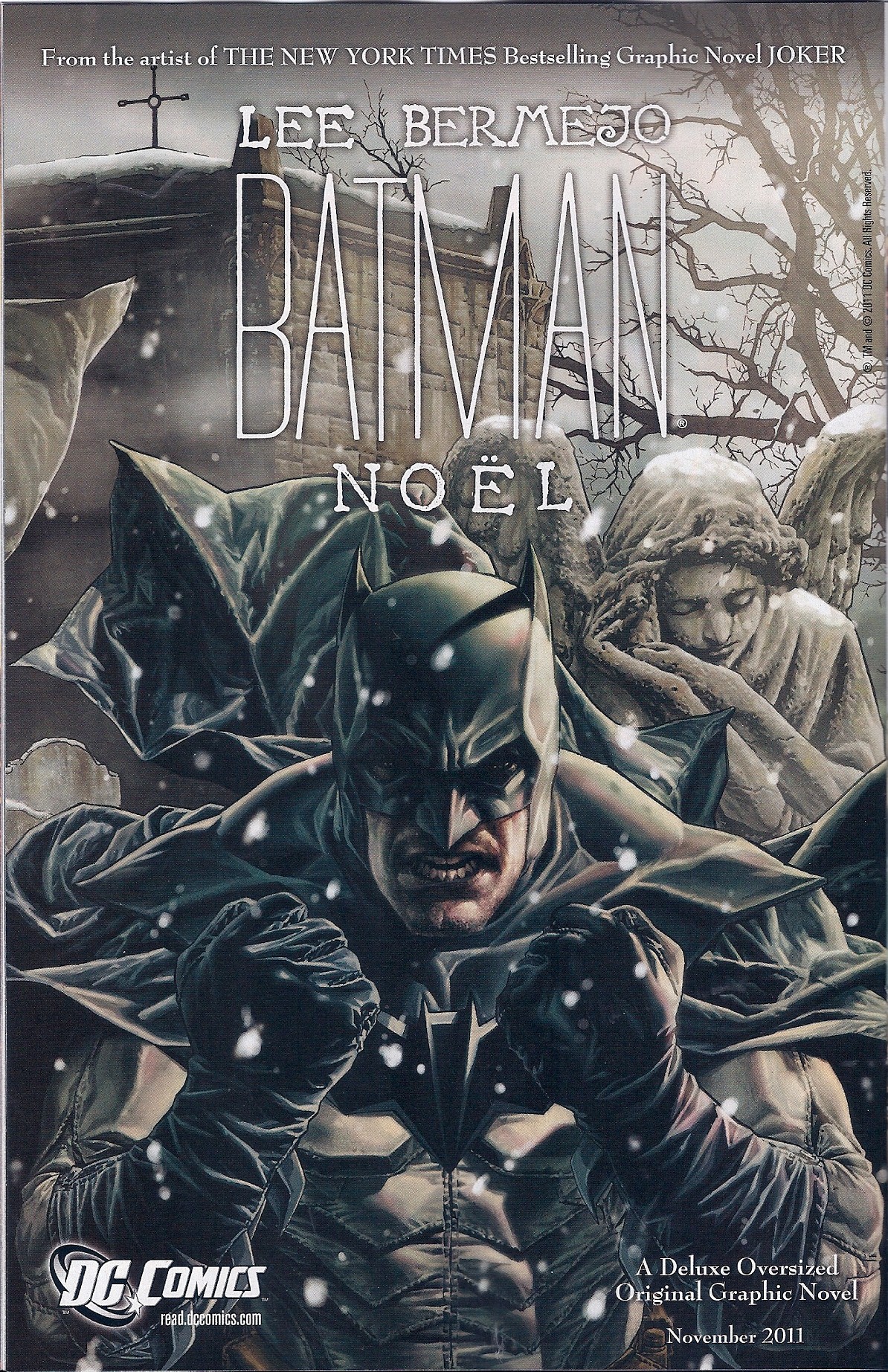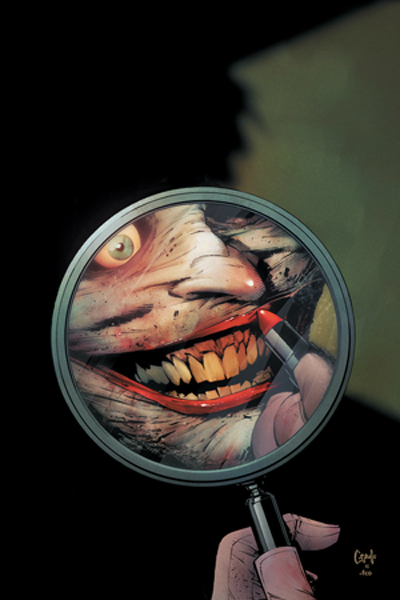 \
\
Scott Snyder was not shy to share his points of view with the staff at Newsarama regarding the Joker’s return. Here is the full report as posted in their website:
Joker is not only returning to the pages of Batman. He’s targeting characters in several other DC comics later this year and into early 2013.
“Death of the Family,” the next major Batman storyline that starts in October, will also eventually bring the Joker into comics like Batgirl, Batman and Robin, Suicide Squad, Nightwing, Red Hood and the Outlaws, Catwoman, and Teen Titans.
Scott Snyder, the writer of DC’s best-selling title Batman, said that he and the other “Death of the Family” writers are working to make sure the stories are self-contained enough that readers don’t have to buy multiple comics to understand them. He said the tie-ins will be somewhat similar to the structure used for “Night of the Owls,” the Batman event that spilled into other comics in May.
Drawn by Greg Capullo, the Joker story in Batman will run for five issues beginning in October’s issue #13. The final issue, in Batman #17, will be oversized. Snyder will also write the back-up stories in Batmanas part of his Joker story.
The writer said “Death of the Family” will focus on Joker’s psychology, using symbolic themes like the idea of a court jester and a tarot card. Snyder called it his “love letter to the Joker,” stating that it’s one of the biggest stories ever done that featured the character in a lead role.
“Death of the Family” will bring back Joker after the character appeared briefly in Detective Comics #1 in September 2011. However, in that issue, the character had his face literally removed at the end of the issue, and has not been seen again in the New 52 universe.
What does his return mean for members of the Batman family? How well does Batman know the Joker in the New 52 anyway? And what makes this story different from other Batman vs. Joker stories? Newsarama talked with Snyder to find out more.
Newsarama: Scott, you’ve been hinting to me for months that you were doing your “favorite villain” in the next storyline. Is this something you’ve wanted to do for awhile?
Scott Snyder: I’ve been dying to do this, like, forever! This is my chance to do my favorite villain of all time in the biggest and craziest way I could possibly imagine. And it’s a story that I’ve had in mind for, I’d say, a good seven, eight or nine months. And it started forming before I even did the “Court of Owls.” So this is really my big exploration and love letter to the Joker overall.
Nrama: Did you coordinate with Tony Daniel the appearance in Detective Comics?
Snyder: Yeah, I did. What happened was, DC wanted to take the Joker away for a little while to give room to some new villains that they were creating in the New 52. And I had said that I had an idea for a Joker story down the line. Tony had a couple different ways that he was thinking of making it possible for the Joker to go away for a bit. And in doing so, we talked about his possibility as something we both liked. I thought this one would tail really, really well into this story. And whichever one Tony picked, I knew I could work with it. And this was the one he really wanted to go with. So I figured I’d tail off of that into this story.
But this story didn’t come from that ending. This story was sort of beginning to be built before that. And then there were a number of different endings in Detective that could have worked. But that one was the one Tony wanted to write. And I think it’s going to work really, really well here.
Nrama: It certainly gives Greg the freedom to play around with the way Joker looks. Can you tell us anything about what we’re going to see from the character?
Snyder: He really is going to, obviously, have a new look. At the same time, we want it to echo his iconic look. So it’s Joker in a much more horror movie fashion.
But, without giving too much away, you will see the iconic face and the grin, and he might look a little bit different and scarier. But you’ll find that he’s still himself at his core. And he’s really here in his blood-stained clothes going to work.
Nrama: So like the title sounds, this is the Joker wanting to really tear down the “Bat” and his family, with a plan behind what he’s doing?
Snyder: Yeah, this is the Joker having been away for a year planning all of this stuff, like planting traps and seeds and all kinds of stuff that are going to come to fruition in this thing.
A year ago, Joker decided, I’m going to walk away from Gotham, I’m going to plan my revenge, and I’m going to come back in a year and bring it all back. So this is what he’s been planning to do for a long time. And all of those things are set in motion.
Nrama: DC announced that the story would be felt throughout the Bat-family, so are we going to see this storyline spill into other titles at DC?
Snyder: Yeah, you’re going to see it in other comics. Batman is going to be 100 percent self-contained, like it was with “Night of the Owls.” You won’t have to read anything else to understand the story happening in Batman, at all. I promise you that.
But because the story is so big, and because Joker is attacking all those members of the Bat-family, essentially, to prove this point that he’s come back to Gotham to prove and to expose this secret that he has, you will see Joker attack Nightwing in Nightwing. And you’ll see him come after Batgirl in Batgirl. And you’ll see him go after Damian in Batman and Robin. And Tim, even, in Teen Titans. And Jason in Red Hood [and the Outlaws].
So there will be issues of those books that feature the Joker coming after him in ways that will be part of the moving parts of the bigger story. But they will all be self-contained, so you don’t need to read other books to follow the series that you love. They should be just completely individual still, in that way where you won’t have to read Nightwing to get a part of Batman.
I think that worked well for “Night of the Owls,” so it should work well here too.
But this story is much darker and much more personal.
Joker is coming after the Bat-family in ways where, it really is almost like when you think about it…. he hasn’t faced off with those characters, essentially, or directly, before.
People will say, “Oh, well, he came after Batgirl in The Killing Joke,” but he was really going after Commissioner Gordon. So when Batgirl realizes that here, too, it’s almost like the Joker is staring at her saying, “I’m coming after you this time. I’ll kill everyone and burn down everything in your life to do what I did to your father, but to you.” You know?
So in that way, he’s saying that to every member of the Bat-family. To Nightwing and everyone, saying, “You’ve never faced me before. I’ve never actually targeted you. I’ve only used you as pawns to get at Batman. So welcome to your worst nightmare.”
Nrama: How long are you planning the Batman story arc to be?
Snyder: In Batman, it’s going to go from #13 to #17. But #17 is going to be a giant issue, like an Annual-sized issue. And plus, it’s also going to be in the back-ups of Batman. So it’s going to probably be the equivalent, I would think, of about seven issues. But it will be those five.
Nrama: What’s the status of the relationship of Joker and Batman in the New 52? And how would you describe how this confrontation affects Batman?
Snyder: This storyline is predicated on the notion that the stuff that happened with the Joker in the past did happen. So Joker will be referencing things that happened in the past. That said, you won’t have to have read them to be able to follow this story at all. They will be explained or recounted in ways where this will be completely self-standing. I would never require you to go back and read stories from years ago to understand what was happening in mine.
But the history of their relationship, like the Joker being his greatest enemy and the terrible things he’s done to him and done to Jason and the other members of the Bat-family are all part of this. They fuel this storyline.
So in a way, he’s sort of saying, “You’ve created this false family around you. You’ve created this group of people. And I’m here to show you what’s wrong with that. And you’ve forgotten about me. And now I’m going to show you why that’s wrong. And I’m going to expose this secret. And in doing that, I’m going to tear you guys apart worse than you’ve ever seen.”
Nrama: I know that “Court of the Owls” was about Batman versus that group, but it had this kind of undercurrent of the story of Gotham, with the city almost being a member of the cast. Is there any theme like that within the Joker story?
Snyder: This one is really focused on the Joker’s psychology in a particular way, and his philosophy. And it’s something that I’ve been working on and tinkering with for months.
There’s a sort of symbolism to that that’s going to be thematic and explored when it comes to the idea of a court jester and a tarot card, and all of the other kinds of things that filter into the imagery of the Joker that he has kind of rattling around in his brain, and that he’s twisted into this very particular logic he follows.
So there will be a lot of things from, like — and I know this sounds crazy — but from Shakespearean imagery down to tarot card imagery, that will be a central theme of the whole thing.
This is really my exploration of who the Joker is, in terms of Batman, and who he thinks he is in relation to Batman.
This is my own sort of twisted love letter to the Joker.
Nrama: We have seen Bruce Wayne versus the Joker before. How is this different? Is it a matter of scale? Is it bigger in magnitude?
Snyder: Yeah, it’s definitely bigger in magnitude, in terms of the story. I mean, for better or worse, I feel so lucky to be able to write Batman all the time, and I feel like you get one chance to do it, so you’ve got to swing for the fence every time you get to work with your favorite material.
With this, Joker is my favorite villain, so I figure that if you’re going to use him, you’ve got to use him like you’ll never get a chance to use him again.
So it’s clearly bigger in magnitude than any story he’s had in awhile — maybe ever, honestly. I’d have to look back. But the fact that he’s in five big issues of Batman, and then he’s in the other Bat-books as he attacks those members of the family, all of it adds up to a massive, massive Joker story.
And in that way, it’s also a game-changer of a Joker story, you know? It really cuts to the core of who the Joker is, who Batman is in his mind and in relation to him, and really, who the Joker is to Batman too, in Bruce’s psychology.
So this is my exploration of those things in a way that’s meant to be as big and as broad and as deep as I could go. It’s not just a Joker story. This is really my big exploration of the Joker myself, in the way that I don’t know that I’d ever use him again after this, in the way that this is my huge Joker story, my personal Joker story to end all Joker stories, you know?
And you know, as prevalent as the Joker is in other media, he really hasn’t had that many central stories in comics in the last 20 years. He played a big part in “No Man’s Land,” and you obviously can go back to The Killing Joke and stuff like that. And he plays a big part in Batman: R.I.P., and he plays a role in Batman and Robin with Grant [Morrison]’s stuff. But he’s not the villain, you know? In those things, he’s not the guy that is sort of pitted against Batman during those storylines.
And so in that way, if you look back, it’s hard to find a big story with the Joker in a long time, even though he’s in the movies, and the animated stuff, and other places.
I looked at that and though, you know what? If we’re going to bring him back, and he’s been away for at least a year here, but he’s also been away from having big, central stories about him for awhile, let’s do it in a way that’s really going to be a grand slam for all of us emotionally, psychologically with our characters.
That means, look, Kyle [Higgins], Gail [Simone] and Scott Lobdell and Pete Tomasi, this is your one chance, and my chance with Bruce, to pit the Joker against them in a way that no one has ever seen, you know? This is the biggest, most twisted Joker story we could do, in the way that he is trying to cut these characters as deep as he can, psychologically, emotionally and literally.
Nrama: I take it then that this is not going to be in Detective and The Dark Knight?
Snyder: We are several months out from when it’s going to tie into the other Bat-books, so the details of that are still being ironed out. But I can definitely tell you that it’s going to be in Batgirl, Batman and Robin, Suicide Squad with Harley, Nightwing, Red Hood and the Outlaws, and Teen Titans for Tim. And I can tell you that right now, it looks like he’s going to make an appearance in Catwoman also. I don’t want to say that other comics might not be a part of that, because we’re still talking about that stuff, and about when it’s all going to hit.
Nrama: Is the approach to this similar to how the you did “Night of the Owls,” in that you opened it up for whoever wanted to utilize the story in their books?
Snyder: It is, but it was a little more structured. What Joker has planned does culminate for all of them in a particular way. So this is different from “Night of the Owls” that way.
In the Joker story, there is a big, crazy ending that they need to work toward.
It was, “You know your character better than me. Gail, you know Batgirl better than I do. Kyle, you know Nightwing better than I do. Joker is here to break them. That means Joker is here to tear down their world the way he did to Jim Gordon in The Killing Joke. You know what I mean? He’ll do anything — rape, kill, anything. He’s the worst nightmare come to life. So whatever you think your character’s greatest weakness is, that’s what the Joker is coming for. So you can kill your whole supporting cast. You can do anything you want. If you ever get a chance to really tear apart the world of your character, this is it, with Joker.”
The stipulation was to do that level of story and nightmare, and of course, then there are some big surprises coming at the end of all of them.
So it was a little more structured. And the thing I loved about “Night of the Owls” was that it was so much about Gotham history, and for everyone to pick a particular moment in Gotham history to explore. But in this one, it’s deeply personal. This is like, the Joker is the guy who comes after you, looks you in the eyes and says, “I’m going to destroy everything you love. And laugh while I’m doing it.”
And that means very personal and impactful stories with a lot of ramifications, as opposed to what we were doing in “Night of the Owls,” which was more about Gotham and its history.
(original interview conducted by Vaneta Rogers for Newsarama)
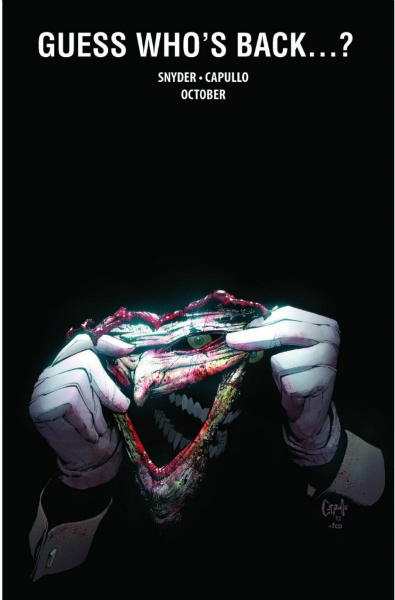








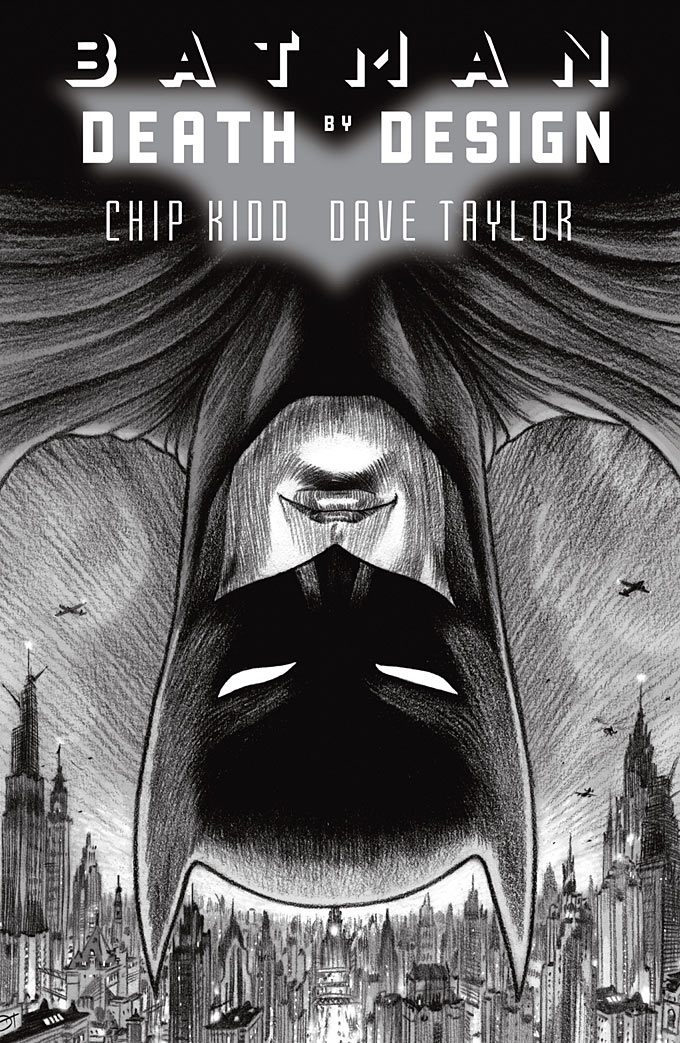 Even though I would say I very much art directed the project, I’m not the artist. So this became an issue of working with somebody who had a like-minded vision of what I wanted to do and could really devote what turned out to be two-plus years of his time to it. I had a sensibility in mind, and I had a kind of milieu in mind. Then I started thinking about a plot and a beginning, middle and end and taking it from there. The artist on the book is a gentleman named Dave Taylor.
Even though I would say I very much art directed the project, I’m not the artist. So this became an issue of working with somebody who had a like-minded vision of what I wanted to do and could really devote what turned out to be two-plus years of his time to it. I had a sensibility in mind, and I had a kind of milieu in mind. Then I started thinking about a plot and a beginning, middle and end and taking it from there. The artist on the book is a gentleman named Dave Taylor.